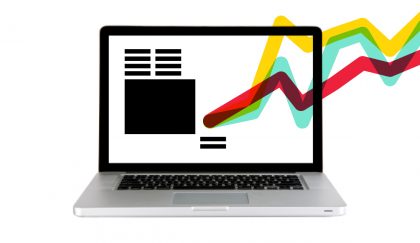A Web Designer’s Guide: Data Driven Design

Skill is a small sliver of the design equation.
Sure, you need to understand design concepts, color theory, and principles of hierarchy, but these things can only get you so far. Data driven design, or those design decisions informed by data, creates the foundation for design and “helps validate designer instincts,” as explained by Creative Bloq.
Data Driven Design—Why You Should Bother
UX Magazine said it best: “We can’t expect analytics to tell us everything…It’s more about creating meaningful categories—also known as metrics—to evaluate, understand, and keep track” of our design decisions.
Although it seems tedious, data driven design is crucial for any successful website redesign. Design isn’t just skill, and it isn’t just quantitative data. Effective design merges both to create beautiful, user-friendly experiences. Data driven design is important because without it, designing can be like trying to find your glasses in a pitch black room, searching blindly for an answer for your client.
Through analytics, surveys, A/B tests, stakeholder interviews, and the like, designers can provide a foundation for their choices, resulting in improved client communication and user-oriented solutions.
Data driven design also helps nix the assumption that designers are just creative wizards; the best designers use data and test rigorously to build experiences that are clear and make sense for the client with audience in mind.
Data Driven Design Principles
Prove, Improve, Discover
From UX Magazine:
“If you are using data to inform design, you have three ways to look at things: proving, improving, and discovering. Using data to improve often means the data-informed equivalent of iteration—tracking across time and across versions or even against competitors. Using data to discover is about looking at data in relation to other data (big or thick) to explore patterns and trends.”
Set Benchmarks
You need a constant to compare the data. Without it, how will you know whether your designs are working? Smashing Magazine recommends “using quantitative data to identify issues and to benchmark current performance, and then using real-time qualitative user testing to understand why you’re seeing those numbers and how to improve them.”
Uncover Goals
You’re ready to test, but do you know what you’re testing? Effective data driven design first identifies your client’s goals and then sets expectations for what achieving that goal might look like. This involves engaging stakeholders to understanding the various goals and needs that the new website should accomplish.
Want More Resources?
We’re big on incorporating data and research into our design concepts. Want to learn more about how you can make strategy a part of your processes? Check out some of our past blogs or tweet us if you have questions!
